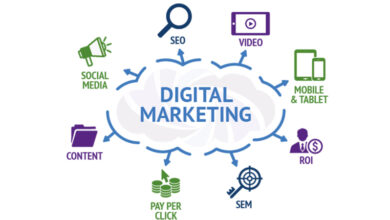
CPC: The Ultimate Guide for Understanding Cost Per Click
Google AdWords is one of the most effective ways to drive traffic to your site and increase brand visibility. The problem is that unless you have a decent amount of knowledge about advertising on Google, it’s easy to spend a lot of money with little return on investment. Keeping track of your ROI can be challenging and keeping tabs on how much you are spending on each keyword can be almost impossible without the right tools. Thankfully, there are several tools available to make it easier for advertisers to understand their cost per click. But what does cost per click mean? In this blog post, we will break down everything you need to know about CPC as well as some tips for measuring and reducing it. Keep reading to learn more!
Table of Contents
What is Cost Per Click (CPC)?
Cost per click is the amount you pay every time someone clicks on your ad. It is a common metric used to determine the profitability of an advertising campaign. Its abbreviation is CPC. CPC is the amount you pay each time your ad is clicked. The more you are willing to pay per click, the more likely your ad will be displayed higher in the search results. How much you pay per click will depend on the competitiveness of the search term you are targeting. The more you are willing to pay per click, the more likely your ad will be displayed higher in the search results. Though, you do need to be careful, because the most expensive keywords usually get less traffic.
How to calculate your CPC
Before you can set a budget for your campaigns, you need to know your current CPC. You can find this number in your AdWords dashboard. To get there, you have to click on “Tools”, then “Ad Tools”. Once you’re on the Ad Tools page, click on “Campaign Settings” and then “Daily Budget”. On the next page, you’ll see a graph that shows the average CPC of your current campaigns. To find the average CPC for your whole account, click on the “graph” tab. To enter the average CPC for a specific campaign, click on the checkbox next to it. Next, find your total ad spend, which can be found on the same page as the average CPC graph. Now, you can use the following formula to calculate your average CPC:
Why is CPC important?
Before you begin to panic about your ever-increasing CPC, keep in mind that there are ways to reduce it. Understanding how your CPC is calculated can help you make strategic decisions to reduce it. The first thing you have to keep in mind is that your CPC is directly tied to your Ad Rank. This is the amount of money Google is willing to pay to show your ad to a certain user at a certain time. Your Ad Rank is calculated based on the following factors:
Your bid – Your bid is a reflection of the value you place on each click, and it affects your Ad Rank directly. The higher your bid, the more Google is willing to pay for that click.
Your Quality Score – Google’s Quality Score is another important factor that determines your Ad Rank. It is calculated based on the above mentioned factors. The higher your Quality Score, the better your Ad Rank.
3 Tips to Reduce Your CPC
There are several ways you can reduce your CPC while still generating the same amount of traffic and leads. Here are a few ways to achieve that:
Set a daily budget – This will help you control your spend and also make sure you are not overspending.
Target the right keywords – Make sure you are targeting the right keywords.
It’s always better to target less-competitive keywords with low CPC than highly competitive ones with high CPC.
Create great ads – The quality of your ads is just as important as the keywords you are targeting. Your ads should be compelling enough to draw the attention of your target audience and drive them to click on your ads.
Conclusion
Cost per click is an important metric to keep track of. It allows you to track how much money is being spent on your campaigns and lets you know what your average CPC is. There are several ways you can reduce your CPC and make sure your campaigns are profitable.








